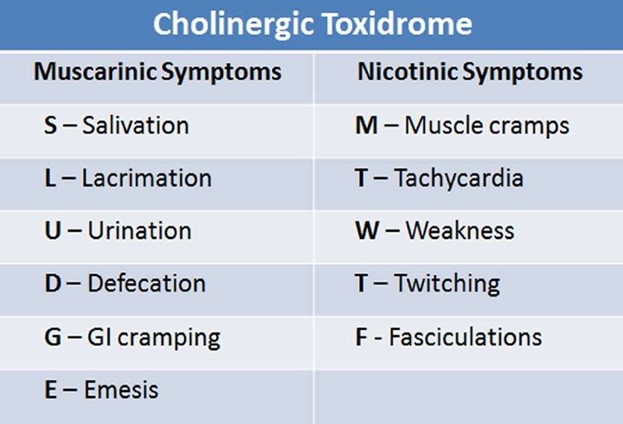A nurse is caring for a client who received neostigmine 1 hr ago and is experiencing a muscarinic response.
Which of the following manifestations should the nurse expect?
Occipital headache.
Fever.
Excessive salivation.
Myoclonic seizure.
The Correct Answer is C

Neostigmine is an anticholinesterase inhibitor that indirectly stimulates both nicotinic and muscarinic receptors by interfering with the breakdown of acetylcholine.
Stimulation of muscarinic receptors can lead to increased salivation.
Choice A is wrong because an occipital headache is not a manifestation of a muscarinic response to neostigmine.
Choice B is wrong because fever is not a manifestation of a muscarinic response to neostigmine.
Choice D is wrong because a myoclonic seizure is not a manifestation of a muscarinic response to neostigmine.
Nursing Test Bank
Naxlex Comprehensive Predictor Exams
Related Questions
Correct Answer is C
Explanation
- A. Assist the client to a left lateral position.
- This is generally used for clients at risk of aspiration, and it's not indicated based on the lithium level.
- B. Implement fluid restrictions.
- Fluid restrictions are usually implemented when there is a risk of fluid overload or hyponatremia, and not in this case. In fact, dehydration can raise lithium levels to toxic levels, so proper hydration is important.
- C. Request a dosage increase from the provider.
- While 0.6 mEq/L is within the therapeutic range, some providers may want to see a level slightly higher for maintenance. So requesting a dosage increase from the provider is the correct action.
- D. Prepare the client for hemodialysis.
- Hemodialysis is used to remove lithium from the blood in cases of severe lithium toxicity, which is indicated by levels significantly higher than 1.5 mEq/L. This is not needed when the lithium level is 0.6 mEq/L.
Correct Answer is A
Explanation
This is because pioglitazone can cause fluid retention and edema.
Choice B is wrong because tinnitus (ringing in the ears) is not a common adverse effect of pioglitazone.
Choice C is wrong because insomnia (difficulty sleeping) is not a common adverse effect of pioglitazone.
Choice D is wrong because orthostatic hypotension (a drop in blood pressure when standing up) is not a common adverse effect of pioglitazone.
Whether you are a student looking to ace your exams or a practicing nurse seeking to enhance your expertise , our nursing education contents will empower you with the confidence and competence to make a difference in the lives of patients and become a respected leader in the healthcare field.
Visit Naxlex, invest in your future and unlock endless possibilities with our unparalleled nursing education contents today
Report Wrong Answer on the Current Question
Do you disagree with the answer? If yes, what is your expected answer? Explain.
Kindly be descriptive with the issue you are facing.
